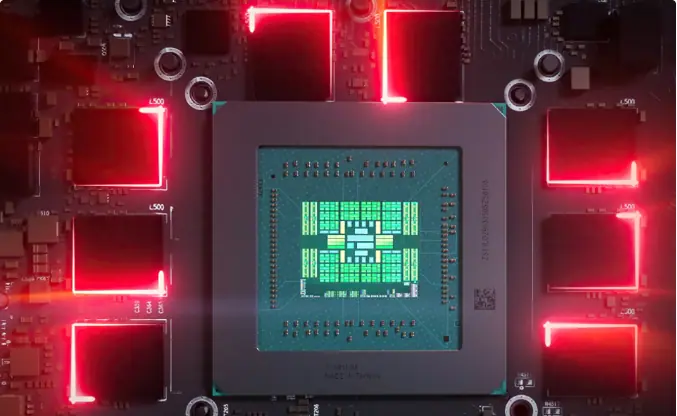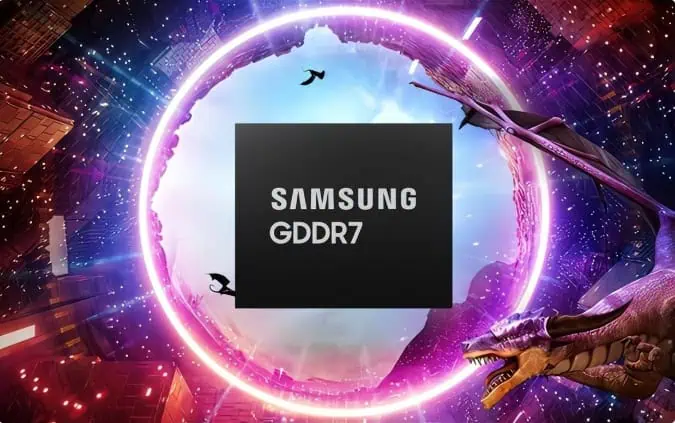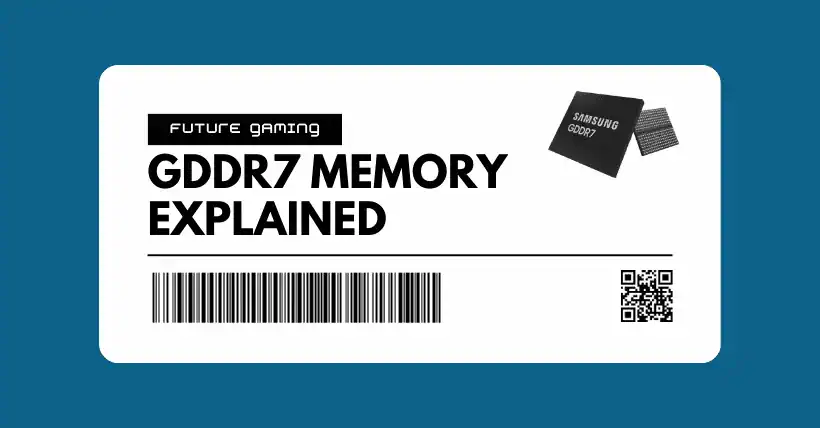With the specifications for the GDDR7 memory standard confirmed this year, storage manufacturers have begun introducing GDDR7 solutions. Compared to the current GDDR6 and GDDR6X, GDDR7 offers a significant upgrade, enhancing performance for gaming and other types of workloads.
What is GDDR7 memory? The “G” in GDDR (Graphics Double Data Rate) indicates that it is memory used for GPUs, such as the upcoming Nvidia Blackwell RTX 50 series.

The previous generation, GDDR6, debuted in 2018 and was first used in Nvidia’s RTX 20 series and AMD’s RX 5000 series GPUs. Its initial memory clock speed was 14 Gbps (14 GT/s), eventually reaching 20 GT/s. GDDR6X was used in Nvidia’s high-end RTX 30 and RTX 40 series GPUs, starting at 19 GT/s and eventually reaching 23 GT/s.
Currently, major storage manufacturers like Micron, Samsung, and SK Hynix have pledged support for the standard and have begun mass production. The first retail products using GDDR7 are expected to be available this fall.
1. GDDR7 Speed
GDDR7’s initial speed is 32 GT/s, 60% higher than GDDR6 and 33% higher than GDDR6X. This is just the basic standard, as major storage manufacturers typically release even higher specifications. Micron and Samsung have announced plans for GDDR7 speeds of up to 36 GT/s, while SK Hynix claims speeds will reach 40 GT/s. These products are likely to debut in 2025.

The past two generations saw the introduction of GDDR5X and GDDR6X, products launched in collaboration between Micron and Nvidia to provide higher bandwidth options. In the GTX 1060 6GB, GDDR5 achieved a maximum bandwidth of 9 GT/s, while GDDR5X reached 12 GT/s. GDDR6 topped out at 20 GT/s, while GDDR6X reached 24 GT/s.
Regarding GDDR7X, Micron has responded that there are no official plans yet. However, a collaboration between Micron and Nvidia for GDDR7X would not be surprising.
2. Which Products Will Use GDDR7?
There are no official announcements yet, but it is rumored that Nvidia’s high-end Blackwell GPUs will be the first to adopt this new memory, with the initial products expected to be available in fall 2024.

Originally, it was expected that AMD’s RDNA 4 GPUs would also use the new memory type. However, rumors suggest that AMD is focusing on mainstream GPUs, likely continuing to use the more cost-effective GDDR6 memory. For Intel, the Battlemage GPUs, aimed at mainstream users, might also use GDDR6, with higher-end models possibly adopting GDDR7 and mainstream models sticking with GDDR6. Overall, the rumors are quite mixed, with AMD’s RDNA 4 potentially launching in 2025 and Battlemage expected to launch either this year or next, though the release dates are still uncertain.
It’s worth noting that GDDR7 can also be used in other devices, particularly AI accelerators. While top-tier AI accelerators rely on HBM memory, designs focused on inference could benefit from the additional bandwidth offered by GDDR7, even if it isn’t as dense as HBM.
3. GDDR7 Technical Details
Currently, Micron uses the smallest process for GDDR6/GDDR6X, reportedly “10-nanometer class,” but GDDR7 is expected to use an even smaller process, with SK Hynix and Samsung following suit. SK Hynix is currently producing GDDR6 on a 21-nanometer process, while Samsung uses a 10-nanometer class process for GDDR6.

The fundamental change in GDDR7 is the use of PAM3 signaling, compared to NRZ (Non-Return-to-Zero) signaling in GDDR6 and PAM4 in GDDR6X. Compared to NRZ, PAM3 uses three distinct voltage levels: -1, 0, and +1, encoding more information per signal cycle, achieving higher voltage margins, and reducing encoder complexity. This makes implementation simpler than PAM4, helping to lower the complexity and cost of GDDR7 manufacturing equipment, though prices may not necessarily be cheaper.
Looking at the development timeline from GDDR2 to GDDR7, GDDR8 might appear in about 4-7 years. The progression from GDDR2 (2003) to GDDR5 (2009) was relatively fast, but the pace slowed down with each generation lasting five to six years, until the advent of GDDR7, which may also last a long time, coexisting with HBM memory.
The first wave of products equipped with GDDR7 is about to hit the market. In addition to larger memory capacity and higher bandwidth, GDDR7 will significantly enhance GPU computing power. If all goes well, products might appear as early as this fall.
Related:

Disclaimer: This article is created by the original author. The content of the article represents their personal opinions. Our reposting is for sharing and discussion purposes only and does not imply our endorsement or agreement. If you have any objections, please get in touch with us through the provided channels.



